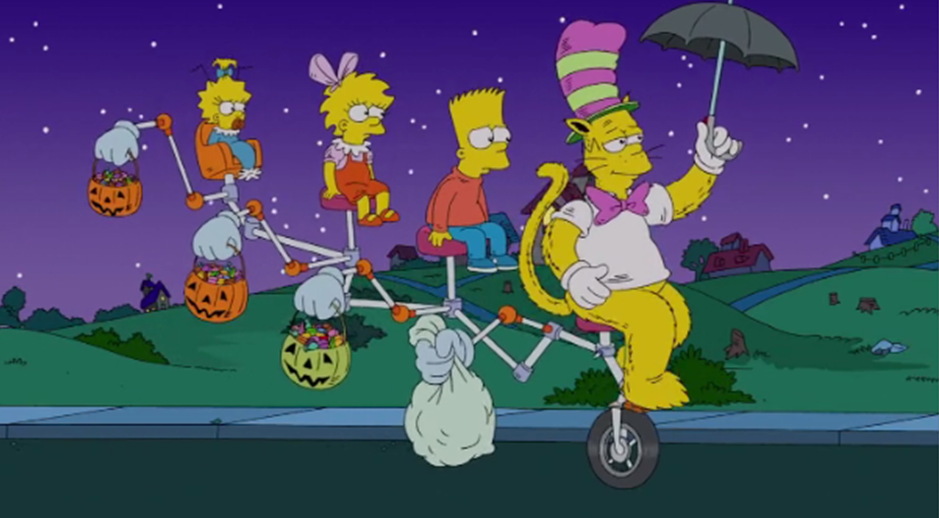I was going to wait until October to do this review to tie in with Halloween, but with the announcement of its sequel series coming this summer (hopefully), I figured why not get this out ahead of that?
A six issue miniseries released in 2019, "DCeased" is essentially the DC Universe's take on a zombie apocalypse. For awhile, DC wasn't very clear about whether or not this series took place within the main DCU, with its non-canonicity only becoming evident just before the first issue's release. Given I had already added the series to my pullist and the concept did interest me, I decided to stay on board. And considering "
Heroes in Crisis" was wrapping up and leaving such a bad taste in my mouth, I desperately needed a good DC event story in some form.
The writer of the series is Tom Taylor, who is most well known for his work on the Injustice video game tie-in comics, so the guy has experience with DC Universes that have gone off the rails. Other works of his that I've enjoyed include a fun Justice League/Power Rangers crossover and two single issue Batman stories that were so good that I think he deserves his own run on the character. Over on the Marvel side, he wrote a decent fourteen issue run on "Friendly Neighborhood Spider-Man", including a touching issue where Spidey helped a Make-A-Wish child fulfill his dream of being his sidekick for a day.
Many have compared this to the "Marvel Zombies" series from DC's main competitor. Personally, I never really had interest in those comics and feel they've been overdone. I did look into it a little to see how it compared to "DCeased", and it doesn't change my opinion much. While "Marvel Zombies" was basically just "all the heroes are zombies", the heart of "DCeased" is that it's a story of survival.
And with that intro out of the way, let's dig into what makes "DCeased" to die for.
It's worth noting that there is narration through the series provided in the form of Lois Lane writing a story to report the events that will transpire, allowing to exposit important information as well as set the tone. So early spoiler, Lois lives through this.
Issue one begins with the Justice League defeating Darkseid after a week long invasion by him and his forces of Apokolips. The team stand over Darkseid, with his jaw broken by Superman and Wonder Woman's lasso around his neck. Superman and Batman tell him to leave Earth and never return as Wonder Woman tries to use the lasso to force him to. Green Arrow chimes in saying it might be easier for Darkseid to say it if Superman hadn't broke his mouth. This is the first instance of both Tom Taylor's excellent dialogue in the series, showing natural conversation and good banter between characters, and Green Arrow being one of the best characters of the story.
Darkseid, however, is still able to speak and removes the lasso before escaping through a boom tube, claiming he has what he came for. Green Arrow worries about how ominous that sounded as Batman gets an alert that Cyborg is missing, not showing up anywhere in the solar system. Other Leaguers question how he would know that, to which Batman replies that given the Apokoliptian technology in Cyborg's body, it would be irresponsible not to keep tabs on him. Superman and Flash follow up asking if Vic knew Batman was doing that and that if he's tracking anyone else as Batman dodges the questions. The morality of Batman being Batman aside, the League have a bigger question of where Cyborg actually is.
We then cut to Apokolips, where Darkseid's minion Desaad has Cybrog bolted to a table through his limbs as Desaad explains about the Anti-Life Equation and Darkseid's desire to use it to enslave all sentient life. Darkseid, arriving on the scene with a Mother Box, already has half of the equation and believes the other half to reside in Cyborg's system. While Cyborg had been using humor to cope with his situation, Darkseid then orders Desaad to remove the hero's tongue, a move that is only a taste of the brutality that's to come in this series. As Darkseid places his Mother Box to Cyborg's chest, Desaad warns his master that by combining his physical half of the equation with the digital half in Cyborg that the process could kill Cyborg and the equation will be lost. Darkseid takes this into account and states that he will "control Victor Stone's end" and "summon death." Cyborg's agony brings about the Black Racer, the New Gods' personification of Death. Darkseid immediately catches the Racer by his neck, saying he has need of him as Desaad sticks a device in his arm that is essentially a blood transfusion going into Cyborg. With this final piece, an Anti-Life Equation appears to Darkseid, but not the one he sought. This is a corrupted version that drives Darkseid so mad that he tries to claw it out of his own head. Desaad teleports Cyborg back to Earth hoping to sever the equation, but it's too late. Darkseid has lost his mind, leading to him punching through the Black Racer and jumping into one of the fire pits of Apokolips, causing a chain reaction that destroys the whole planet. Considering how much of a threat Darkseid and Apokolips are, you know this is serious when an entire planet is done away with in an instant.
But the terror is only beginning as a boom tube drops Cyborg in the middle of Metropolis surrounded by people who immediately take out their phones. Lois' narration states that Cyborg's system automatically connected to the internet and the corrupted Anti-Life Equation in him made its leap to the world wide web. Cyborg's attempt to firewall himself was too late, as the Equation spread through all forms of social media as a techno-organic virus into anyone using it. With all the people around Cyborg on their phones, they all become infected and enslaved, attacking one another as Cyborg watches in horror.
Elsewhere, Superman is meeting with Mr. Miracle and Big Barda to form a plan to rescue Cyborg from Apokolips when Superman's super-hearing picks up screaming. "
The world is screaming," he states as he watches chaos unfold on the streets of Metropolis. His thoughts immediately turn to Lois and their son Jon. At the Kents' apartment, Lois is looking for her phone as Jon and Damian Wayne are playing video games. Jon asks Damian to find it with his detective skills, who then points out Jon could just use his x-ray vision. Jon sees it behind a bowl of oranges and is about to pick it up when his father flies in and uses his x-ray vision to destroy both the phone and the TV, telling everyone to not look at the screens (in another context, this could be used to promote limited screentime). Superman says he needs to assemble the League but Lois points out how there may not be a League left. These worries are well founded as Damian is unable to contact his father. The Kents try to reassure him that if anyone could survive this, it's Batman.
Speaking of Batman, down in the Batcave, Bruce has already firewalled his system from the virus and surveying the situation. Gotham is just as bad as Metropolis and the batcomputer calculates 600 million people are already infected worldwide, and with the virus spreading both through the internet and blood to blood transfer, the number will skyrocket to billions. Unfortunately, the internet wasn't disconnected up in Wayne Manor (which is probably a big oversight on Bruce's part) and he initiates an emergency EMP to knock out the power. Bruce races up to the manor to find Alfred with a knife trying to hold off an infected Nightwing and Red Robin. Issue one ends with Bruce trying to fight them, screaming at Alfred to run as Bruce is bitten and scratched by his young wards.
Issue two begins with Aquaman investigating a cargo ship that has veered off course and many of its shipping containers going overboard. He opens a door to discover a horde of infected people inside, with many of them instantly pouncing on Aquaman, sending the hero and his attackers overboard. Meanwhile in Gotham, Poison Ivy is giving encouragement to Harley Quinn to go inside Joker's lair to finally end their relationship. Ivy tells Harley that she's strong enough to do it on her own and that she'll meet her at the botanical gardens afterward. Harley goes in and finds Joker staring at multiple TV screens. As she states that it's over between them, she's unaware that Joker is already infected.
Meanwhile meanwhile, outside Metropolis, Green Lantern, Green Arrow, and Black Canary in their civilian identities of Hal Jordan, Oliver Queen, and Dinah Lance, have decided to go camping to take a break after defeating Darkseid. Hal is complaining that he hates camping as Dinah and especially Ollie give him a hard time for it. After Ollie jokingly inducts Hal into the "Killjoy Corps" (again, I love the character banter in this series), Hal decides to retire for the night and heads to his tent. While they notice Hal's phone light through the tent, Oliver and Dinah decide to make music together, with Ollie using the string on his bow to make a tune as Dinah begins to sing. The performance is cut short when they hear Hal scream and his tent explodes with green energy. An infected Hal has suited up in his Lantern uniform and begins using lethal constructs against his friends, slicing Dinah's back. Oliver shoots a boxing glove arrow at Hal and threatens to use a real one next. Hal is about to attack Oliver with a monster mouth of a construct with sharp teeth when Dinah props up and uses her Canary Cry to stop Hal, the act of which puts the hero down for good.
Back in Metropolis, Jon and Damian have suited up as Superboy and Robin as they go with Superman and Lois to the roof of the Daily Planet as a means to communicate with anyone they can. They can't go inside though, as Superman uses his X-ray vision to see that everyone inside is already infected, including his and Lois' co-workers. Superman's super-hearing picks up on Dinah's scream and heads toward the campsite. Dinah and Oliver are in shock over what happened as Hal's power ring scans for a replacement, instantly going to Dinah and inducting her as a new Green Lantern. This is a good moment that was perfectly set up before with Dinah fighting through her own injury to save someone she loves. Plus, her design is pretty cool as it mixes her own Black Canary costume with the Lantern uniform, including the leather jacket. Dinah says she doesn't want this as Superman arrives and tells them they're going to need it.
Ollie suits up as Green Arrow as he, Dinah and Superman arrive back at the Planet's roof and are informed that contact was made with Batman. Batman explains to them what we already know about how the infection is spreading, but clarifies that they're not zombies. "
They're not consumed by hunger. They're not feeding. They're spreading death. They're stealing life. These are the Anti-Living."
At this point, I'd like to point out what I mean with tagline of this review, as I feel this story is a good combination of two past DC events, 2008's "Final Crisis", and 2009's "Blackest Night". "Final Crisis" involved Darkseid succeeding in using the (proper) Anti-Life Equation and is able to spread it through TV, computer, and phone screens. "Blackest Night" is the more similar event to "DCeased" involving the rise of Nekron and the Black Lantern Corps with power rings reanimating the corpses of fallen heroes and villains to spread death to the entire universe. Both events had a real 'end of the world' feel to them and "DCeased" is able to mix the ideas greatly. While I already see "Blackest Night" as one of DC's best events, I feel "DCeased" does a better job with the Anti-Life Equation than "Final Crisis" did, much like how "
Forever Evil" better captured "The Day Evil Won" tagline of the event. My point is this makes two stories where concepts from "Final Crisis" were better executed in other stories; I think that shows how mishandled that event was.
Back to "DCeased" though, Batman also reveals that he's been infected himself and in a move of genius is wearing one of Mr. Freeze's suits to help slow the virus down. Alfred is standing behind him with shotgun in hand and a look of worry of what will need to be done. Despite everyone's objections that Batman will find a way out of this, Bruce says there's nothing they can do for him or anyone, and that the only way to save the world is to destroy the human carriers and take down the internet. Bruce then tells Damian that Alfred will give him something, contained in a suitcase with the bat-symbol on it, that Bruce had always wanted to give his son. As Bruce's begins to express regret he won't be able to do it himself, the infection takes hold of Bruce, who smashes the Freeze helmet around his head and turns his attention to Alfred. Alfred cuts the transmission and points his shotgun toward Bruce. Issue two ends with Alfred stating "
It shouldn't have ended this way. Not for you. I'm sorry, son", with the last panel of the issue just having the word "BANG". While this was already an alternate universe story, with an emotional ending like that, I think the fact that not even Batman would make it to the end was a sign that no hero was safe and subverts any expectations one would have going in.
Issue three opens with Alfred laying the bodies of Bruce, Dick and Tim side by side in the Batcave, expressing regret that he was unable to save "[his] boys" as he takes the suitcase for Damian and leaves in the Batwing. The scene adds some extra overtones with Lois' narration about how there was no time to process or grieve over all the loss. All anyone could do at the moment was act, which is shown with Alfred flying over Gotham using the Batwing's missiles to take out any of the Anti-Living as he can. Down on the streets, Harley is running away from the infected Joker. Harley picks up a shotgun dropped by a civilian trying to defend himself from other Anti-Living, deciding to stop running and "face [her] monster." In a moment that's been a long time coming no matter what continuity, Harley blasts Joker point-blank in the stomach, putting down the clown for good. Harley feels on top of the world right now, but as she's making her way to meet with Ivy, she's blocked by, as Harley puts it, "Zombie Birds of Prey", made up of infected Batgirl, Batwoman, Huntress, and Catwoman. Harley's not running anymore and decides it's "bird hunting".
Meanwhile in Atlantis, Mera is helping Tempest train when they notice it getting darker, but it's not night. The water is becoming drenched in blood due to the infected Aquaman and his seemingly infected sharks attacking multiple Atlanteans. As the blood spreads, Tempest breathes some of it in and becomes infected as well. The Anti-Living Atlanteans circle around Mera, who uses her powers to push back her would be attackers and the tainted blood. As Mera swims away from the scene, we see Atlantis covered in red, signifying the loss of the nation.
Back in Metropolis, Jon is comforting Damian over the loss of his father as Superman decides he needs to get to his parents in Smallville, only after securing the building to make sure none of the Anti-Living can get to his friends and family in the meantime. Despite his intended mission, Superman stops to help as many people as he can along the way, emphasizing the selfless nature of the character. This includes saving Black Lightning and his daugthers, Thunder and Lightning, from an infected Clayface, telling them afterwards to head to the Daily Planet in the helicopter they're on.
As Superman reaches his family farm, he finds his mother with shovel in hand outside the barn. Martha tells Clark that Jonathan's inside and Superman enters. In a scene with mostly no dialogue outside of an infected Jonathan's grunts, he tries to attack his adopted son. While Superman is able to hold him off easily, the Man of Steel has a solemn look on his face throughout it all, signifying the hurt and regret he's experiencing. After locking Jonathan back in the barn's tornado shelter, Clark returns to his mother and tells her it's time to go. Issue three ends with Martha telling Clark that they can't leave Jonathan, as Superman carries her off and replies with "
He isn't here, Ma. He isn't here." Another emotional scene that can be best summed up by Spider-Ham: "the hardest thing about this job is you can't always save everybody."
Issue four begins in the underground lab of CADMUS in Washington DC, where we see Captain Atom and Amanda Waller discussing a plan of action. Ray Palmer/"The" Atom (no relation) has shrunk down into an infected corpse to analyze the virus and how to destabilize it. While the Captain wants to wait until Ray returns, Waller says the order has been given and that they need "to start excising the infection"; by that she means Captain Atom needs to start wiping out all the Anti-Living he can. As the Captain begins taking down the Anti-Living in the streets of Washington, he feels something happening inside of him. It turns out Ray Palmer had become infected himself, hopped over to Captain Atom and began infecting him from the inside. To be clear, Captain Atom is basically a living weapon with atomic energy powers. Him succumbing to the virus has made things go from bad to worse.
Back in Metropolis, Superman and Martha regroup with everyone on the roof of the Daily Planet, as the Kent family immediately embrace each other to mourn the loss of Jonathan. In the first bit of good news, they've managed to set the antennae to broadcast a message to every TV and radio they can reach. Superman plans to go back out and keep saving people, but Oliver and Dinah try to point out that it's too much of a risk for him being infected, even if he just glanced at a screen. Superman reassures them by saying that he's been using his X-Ray vision since the start of the mayhem (smart thinking). Even so, Dinah decides to join him.
Lois begins broadcasting her message, reassuring the people that the Justice League is combating the situation and putting out the call to any heroes to come to the Daily Planet roof if they're able. We see glances of people hearing her, from civilians hold up in their homes, to heroes including Beast Boy, Wonder Girl (Cassie Sandsmark), and Hawkgirl, and even Lex Luthor and Mercy. The message even reaches Themyscira (they have an old time radio), prompting Wonder Woman into action as well; it's also worth noting that Mera has made her way to the island and is granted sanctuary by Queen Hippolyta.
We then cut to Keystone City where Superman and Dinah have found Flash and Kid Flash (New 52 Wally West). The speedsters have been hold up, realizing that either of them being infected would only make things worse, but they agree to be moved safely by air.
Back in Gotham, Harley is trying to hold off the zombie Birds of Prey with her shotgun, only to run out of ammo. Luckily, she's saved by Poison Ivy, who crushes the heroines with vines. Ivy walks off with Harley, stating that "the green will protect [them]."
Back in Metropolis, Lois is still broadcasting when a big threat arrives, and I mean huge: an infected Giganta, tall enough to look over the Daily Planet. Black Lightning and Green Arrow try to hold her back with their powers and arsenal as Superboy blasts her with heat vision. Help arrives in the form of the Batwing, firing missiles at Giganta, only for her to take out a wing. Thankfully, the Batwing is caught by the construct of a hand courtesy of Dinah, as Superman flies a double punch into Giganta that knocks her down to the ground. Wonder Woman arrives and plans to finish Giganta with her sword, only for Superman to stop her, his reasoning being that if they're infected, they could still be saved. Their argument is cut short though as Cyborg arrives and blows a huge hole from ear to ear through Giganta's head. The first time I read this, I thought for sure Cyborg was lost back in issue one, so seeing him alive (and his tongue regrown too) was a nice surprise. While Superman is shocked at what Cyborg had done, Cyborg clarifies that none of the infected are alive.
Damian rushes to the Batwing, expecting to see his father, but as we know, it was Alfred piloting it. Alfred gives Damian the case, revealing a batsuit for the young man. "
He said you were worthy of it. That he was proud of you...", Alfred says to Damian. "
...and that he should have told you that every day." This is followed up with a crying and trembling Damian being embraced by Alfred.
As the heroes regroup, Thunder gives Barry and Wally her contact lenses; while it'll make their vision blurry, it'll protect them from any screens. Cyborg then explains a bit of what we already know about the Anti-Living, but adds on that they can sense life and have a drive to find it and end it. Things are cut short though when they see Hawkgirl, her wings on fire, falling from the sky. Wonder Woman catches her, who's still lucid enough to tell them about Captain Atom, and he's about to blow.
As Captain Atom is tearing up Washington even worse than how it was already, Superman and Wonder Woman arrive and attempt to remove him from the area before he explodes. But it didn't matter. Captain Atom explodes and doesn't just eradicate Washington. According to Lois' narration, the blast radius is large enough to take out Baltimore, and as issue four ends, Metropolis begins to be engulfed by the blinding light.
So how do our heroes get out of this mess? Well, issue five shows Superman and Wonder Woman, who survived thanks to their physiologies, in the wasteland that was once Washington DC. They head to the ruins of Metropolis and see that Dinah was able to use her ring to place their group in a protective bubble construct, keeping them safe from the fallout as well. As it turns out though, Lex and Mercy also survived thanks to their Lexosuits. Lex calls out to Superman, who thinks Lex is there for a fight. But all Lex can do now is fall to his knees, look up to his enemy and say "
Look what happened to our city." Normally you'd expect Lex to blame this all on Superman, but even he isn't that blinded by hate.
With the worst seemingly over, the heroes attempt do what they can to help others. First things first, the League take down all of the internet, from servers, satellites, and undersea cables, leaving the only way to spread the virus is by blood. Two sanctuaries are set up. Wonder Woman is able to convince her mother to allow outsiders on Themyscira, as she, Superman, and Mera lift sections of the seafloor to add more landmass to the island.
The other sanctuary is one they hope to set up in Gotham. A jungle had grown in a week, including an impenetrable thorn filled wall. With Poison Ivy being the obvious architect behind this, Oliver, Dinah, and Damian, now suited up as the new Batman, hope to convince her to help. As they approach the wall, they're attacked by an infected Killer Croc. While they attack with batarangs and arrows, Croc is ultimately taken down via vine impalement. Damian and Oliver are also tied up by vines, and while Oliver tells Dinah to cut them down, Damian has enough forethought to stop her from harming the plants. Harley and Ivy emerge through an opening she made the wall, first wondering why a Robin is dressed as Batman. Damian tells them his father's dead, and even the villains feel sorry for the boy. The heroes are let loose as Damian asks Ivy to allow survivors into her shelter. It turns out Harley had already been "nagging" Ivy into letting others in. Harley tells Ivy that she wants her to be a benevolent queen and have some empathy. Ivy finally relents and lays down her terms, to which the heroes agree: fruit will be given as necessary and anyone who hurts any plants will be thrown outside to the monsters.
So obviously, Damian is still a young man and quite shorter than Bruce. Even so, he's able to wear the Batman suit well. I'm guessing Damian may be a bit older here than in the main continuity though, so any Batboy jokes don't come off so blatant. In any case, he still looks more intimidating than David Mazouz's suit in the Gotham TV series finale.
The Fortress of Solitude has now become a new hub for the heroes, and it's here that Cyborg and Lex are designing arks, each able to fit seven million people, to leave the planet. Superman still wants to fight for the planet, though the consensus is escape is the only means to survive. And if you think Lex is totally playing nice now, he has to get a jab in to Superman with "
Losing two homeworlds in one lifetime. How careless." This immediately gets him decked by Lois, possibly breaking his nose. As she notices Jon and Damian were watching, she feels the need to say "Violence is never the answer" to her son. Jon then looks to Damian and says "
It looked like a pretty good answer just then." Agreed. Badass mom moment right there.
As the weeks go by, survivors are brought to the sanctuaries in Gotham and Themyscira as work begins on the arks. But just when things seem to be going well, the horror returns. At the Fortress, an infected Martian Manhunter, initially cloaking himself, appears and slices Lex Luthor in half, as well as slash Flash's back. Honestly, this is my one problem with the story. All this time goes by and an infected Martian Manhunter just shows up out of nowhere? Where was he and how long had he been infected? I don't know, it just seems a little contrived.
Anyway, Black Lightning and Firestorm use their powers to put down J'onn, but Barry's gone. The infection has already taken hold and he's running and infecting everyone he can at top speeds. Wally wants to go after him, but Superman stops him, not wanting him to turn too. Superman takes flight, but doesn't plan to catch him. He first makes sure with Cyborg that Flash is really dead, showing that after everything they know and been through, Superman still wants to hold on to hope. Superman's plan is to build up enough speed and meet Barry head on, causing a collision that splits Barry into pieces. But the situation is only made worse, as Barry was able to dig his fingers (literally) into Superman's side. Lois' narration adds to the dread: "
That day, we found out what happens when the unstoppable force meets an immovable object...they merge." That is hauntingly poetic.
Superman's Kryptonian physiology helps him fight the infection longer than others, and he uses the time to head back to the Fortress. First he informs Wally that Barry is gone and he's not far behind. Superman asks Wally to connect him and his family to the Speed Force, using Flash Time to allow him to say what he needs to. To Martha, he thanks her and Jonathan for taking him in and instilling their values into him. To Lois, he feels lucky for having loved her and thanks her for choosing him, sharing one last kiss. To Jon, he tells him to have hope, that he'll always be proud of him and that being his father was the best experience he had in the universe.
Issue five ends with Superman attempting to fly out of Earth's atmosphere, hoping to cut himself off from oxygen before the virus took hold. As Lois' narration points out that there may have been a chance had he not stopped to talk to them, it's too late. Just above the Earth, Superman succumbs to the infection. While many powerful heroes and villains had already been infected and caused horrific damage, the Anti-Life Equation taking hold of Superman and being able to use his unlimited feats truly feels like the loss of hope.
Issue six shows Superman's reign of terror beginning, by flying full speed through 432 Park Avenue in New York City, the caption also noting it as the largest residential building in the world. The force of the impact implodes the building and who knows what other kind of devastation on the ground level. At the Fortress, Cyborg says to get the arks ready to leave Earth. Since Superman could take the arks down instantly, it means the heroes need to keep him busy. Damian reveals that Bruce had also left him his plans to take down every major hero, including Superman. Green Arrow brings up that even in death, Bruce had to scheme against them all. Damian points out that there wasn't one for Green Arrow, which causes Oliver to be slightly hurt. Damian has some kryptonite on hand as well, but Wonder Woman points out that Bruce's plans were never lethal and they can't hold back in this situation. To this end, Diana forges the kryptonite into her sword, fusing with Superman's other weakness of magic, and heads off to face Superman with Cyborg and Dinah.
They were only able to build two arks, which they take to the sanctuaries in Gotham and Themyscira, with very limited space and time to save who they can. Damian and Wally gather everyone in Gotham, save for Ivy and Harley. Ivy won't abandon the plants and Harley won't abandon Ivy, so at least they'll all have each other. It's also worth noting that Wally is wearing a new mostly yellow suit, lacking the red pants of his Kid Flash costume. While it could be chalked up to a coloring mistake, a big part of this story is seeing the younger heroes stepping into the roles of their mentors, so a new suit for Wally could be seen as his way of becoming the new Flash.
Anyway, things don't go as easy on Themyscira, as the infected Aquaman arrives to the shores with an army of Anti-Living Atlanteans, and a freaking kraken. Aquaman is quickly taken out with an arrow through the eye, thanks to Green Arrow. "
And Batman didn't think I could be dangerous", the archer remarks. "
Just fired an arrow half-a-mile through raging winds into the brain of the undead king of the sea while he was controlling the damn kraken. @#&% you, Batman." Great, people already complained about the character stealing from Batman on the Arrow TV series, now he's stealing Robin's infamous line from Titans.
Seriously though, while I already said in the intro Tom Taylor would be great on Batman, rereading this convinces me he needs to take over for Green Arrow too. Anyway, to buy time to load people onto the ark, the Amazons go to war with the Atlanteans. Unfortunately, the longer the fight lasts, the more Amazons become infected as well. Queen Hippolyta, knowing the sacrifice her and her people are making, orders Wonder Girl to the ark as the ship escapes from the war zone. In another poetic line, Lois' narration states that "
Paradise held off oblivion."
Meanwhile, Superman continues causing destruction (presumably still in New York), as Diana, Vic, and Dinah arrive. With no signs of life around them, the heroes don't hold back. Dinah beings with a ring construction of a megaphone to amplify her Canary Cry. This only works for so long until Superman is able to power his way through. He tries to get through her shield until Diana swoops in and cuts off Superman's right arm and impaling him with her sword. But Superman still has power to spare, punching through Wonder Woman's stomach. She falls and as Cyborg and Dinah attend to her, Superman flies off to the arks. Cyborg tells Dinah to go stop Superman, revealing that he was always planning to stay on Earth since the virus was still within him.
On one of the arks, Jon sees his father coming with his super-vision. He looks to Damian and asks him to look after his mom, hugging his best friend and saying he'll be a great Batman. Lois tries to stop Jon, but the young man says he knows what he has to do. In similar fashion to his father that symbolizes the passing of the mantle, Jon takes off his jacket revealing his Superboy uniform. Superboy flies out of the arc and heads on a collision course with his father, causing a major boom that knocks them both unconscious, though Superman recovers quickly. Lois' narration points out that Jon wouldn't have been able to stop Superman, but he was able to buy time as the entirety of the Green Lantern Corps arrive, led by Guy Gardner and Ganthet. They face off against Superman, who decides to fly straight into the sun and begins absorbing all its radiation. Through this process, the solar system will eventually grow cold and die. With nothing left for them to do, the Corps place the Earth under quarantine and escort the arks in search of a new world.
Back on Earth, Cyborg holds an infected Wonder Woman in place with her lasso of truth. Cyborg asks if she can speak and she replies "
We have a voice." Cyborg then asks if there's a cure to the virus, with Diana revealing, in a true horror movie fashion of a twist, that the cure was in Cyborg all along. "
You are man and machine. You are binary. Off and on. Patient Zero and the One. The Alpha. The Omega." Realizing everyone they fought could have been saved, Cyborg looks up to the sky and knows he has to inform the arks. Distraught, he inadvertently let go of the lasso, Wonder Woman is free and rips off Cyborg's head.
So between Superman going into the sun and speaking through Wonder Woman, it does seem that the Anti-Life Equation has a form of sentience. I guess this would excuse the surprise appearance of Martian Manhunter at the Fortress in issue five, but the kind of time it took for him to make his move still feels off. Even if the Equation was biding its time, part of me feels the drive it has to spread death would have overridden any rational thinking and that the way things played out were only done to add more drama at the exact moment there was a chance of hope. While I have been harping on this, it's really a small hiccup rather than a major plothole though and doesn't hurt the story at all.
And so, the series ends with the arks approaching what Lois refers to as "Earth 2" (not to be confused with the multiverse Earth 2) and declares that "the monsters were behind [them] now."
"DCeased" is an awesome well written story. Tom Taylor has a brilliant handle on the characters of the DC universe, capturing the dialogue and emotional moments in a natural way. Being set outside the main DC universe allows it to have major consequences than would normally be allowed in a way that it doesn't feel like things are being done for shock value. The art by Trevor Hairsine is pretty decent, giving a unique feel to this story. There's obviously a dark atmosphere throughout, since there was no recovery time between the Apokolips invasion and the Anti-Living outbreak; hell, the brightest spot I can think of is the final splashpage when the arks reach Earth 2. Some of the art in the relaxed moments can feel a little off, but he truly shines when it comes to the Anti-Living with the horrific transformations of civilians, heroes, and villains.
The Anti-Living are a unique take on zombies. With the way it can spread through the internet, it meant that unless you were completely off the grid, you were susceptible to it. There's also the fact that it doesn't necessarily kill but corrupts the mind and that anyone infected could still be killed by conventional means, even if they may have a little more endurance to begin with. Also, it's mostly fast acting, which does away with the trope of someone being infected but hiding it from others that we see in so many zombie stories.
Admittedly, there is a bit of a pacing problem with our heroes gathering on the roof of the Daily Planet for three issue in a row and no significant progression of the story happening until issue five. I feel it's forgivable though as nothing that happens really feels like filler, and with as much as I wrote on each issue, there's definitely importance with each scene that pays off by the end.
Overall, I highly recommend "DCeased" as a great story for fans of superheroes and horror and easily accessible to new readers.
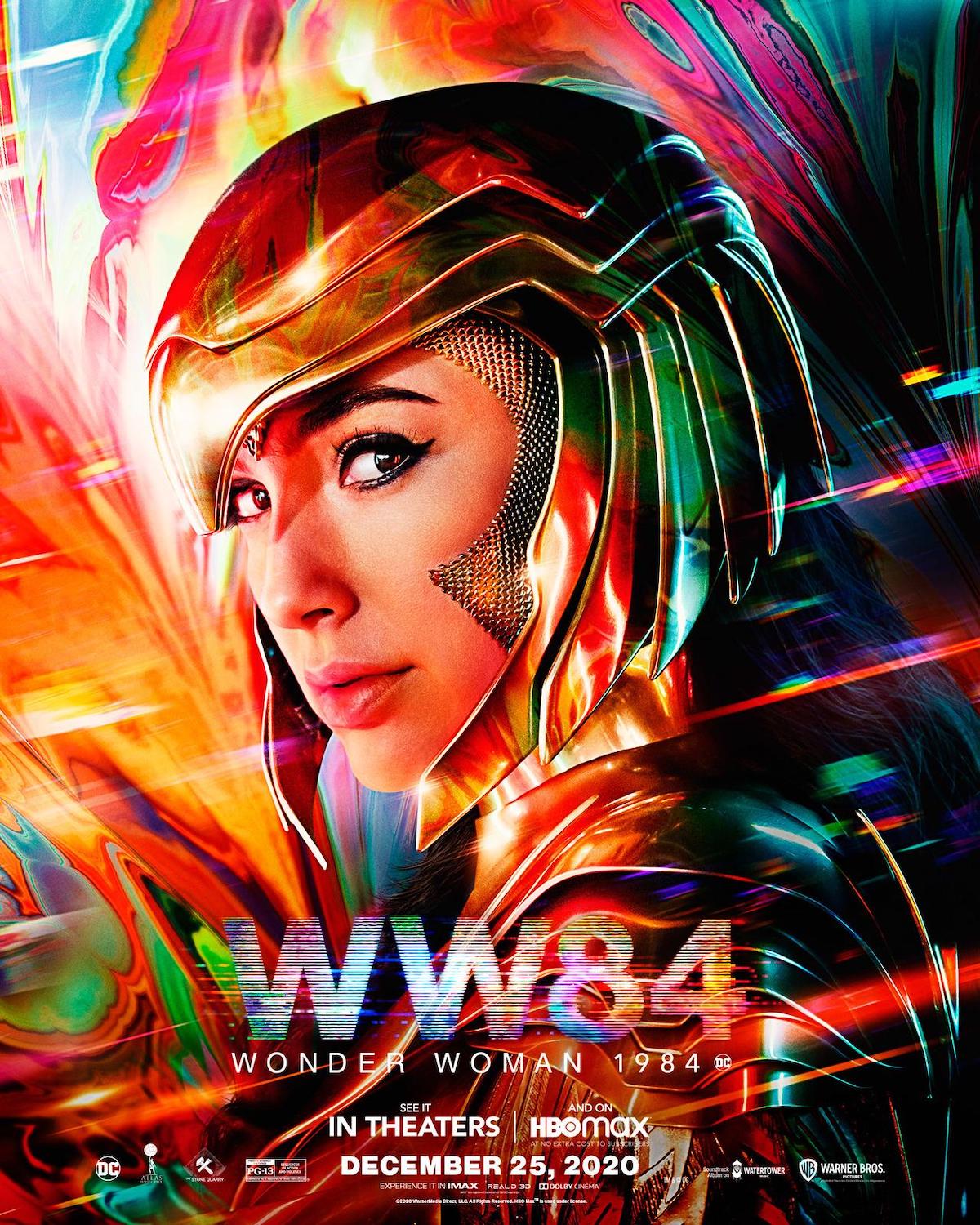
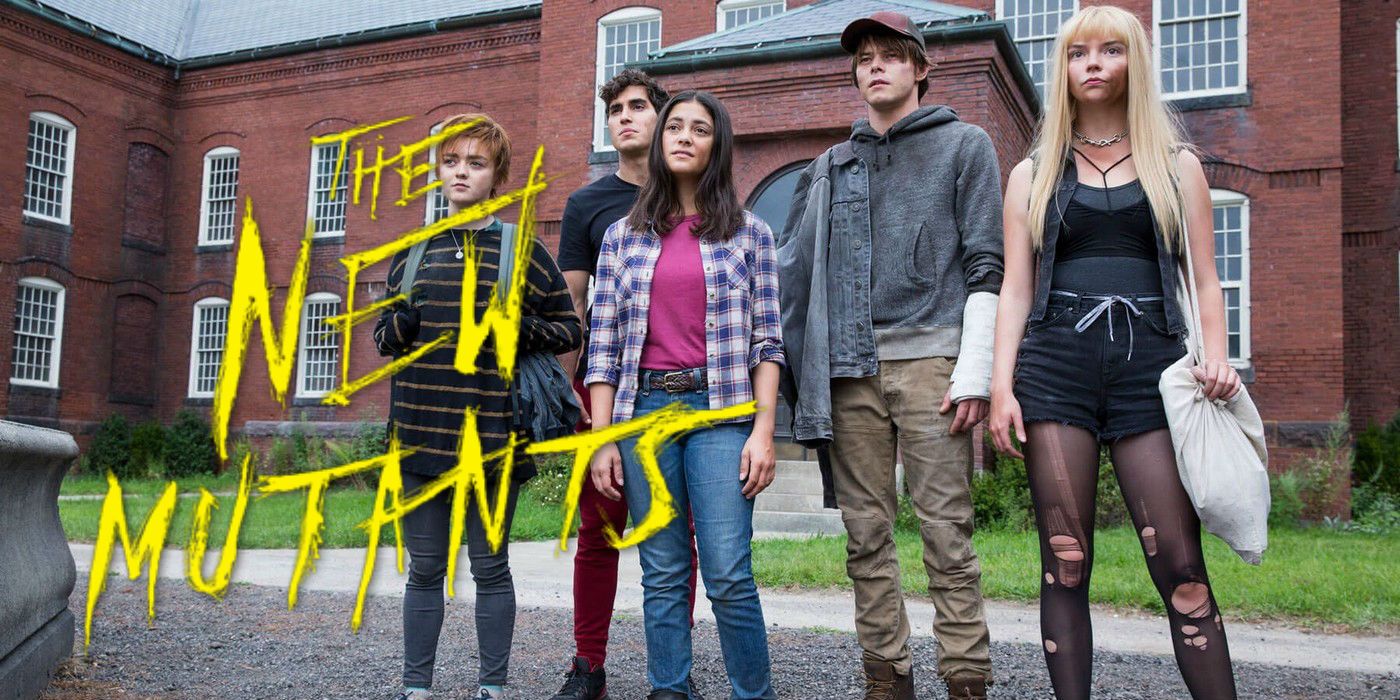

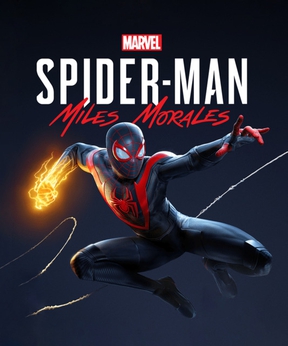
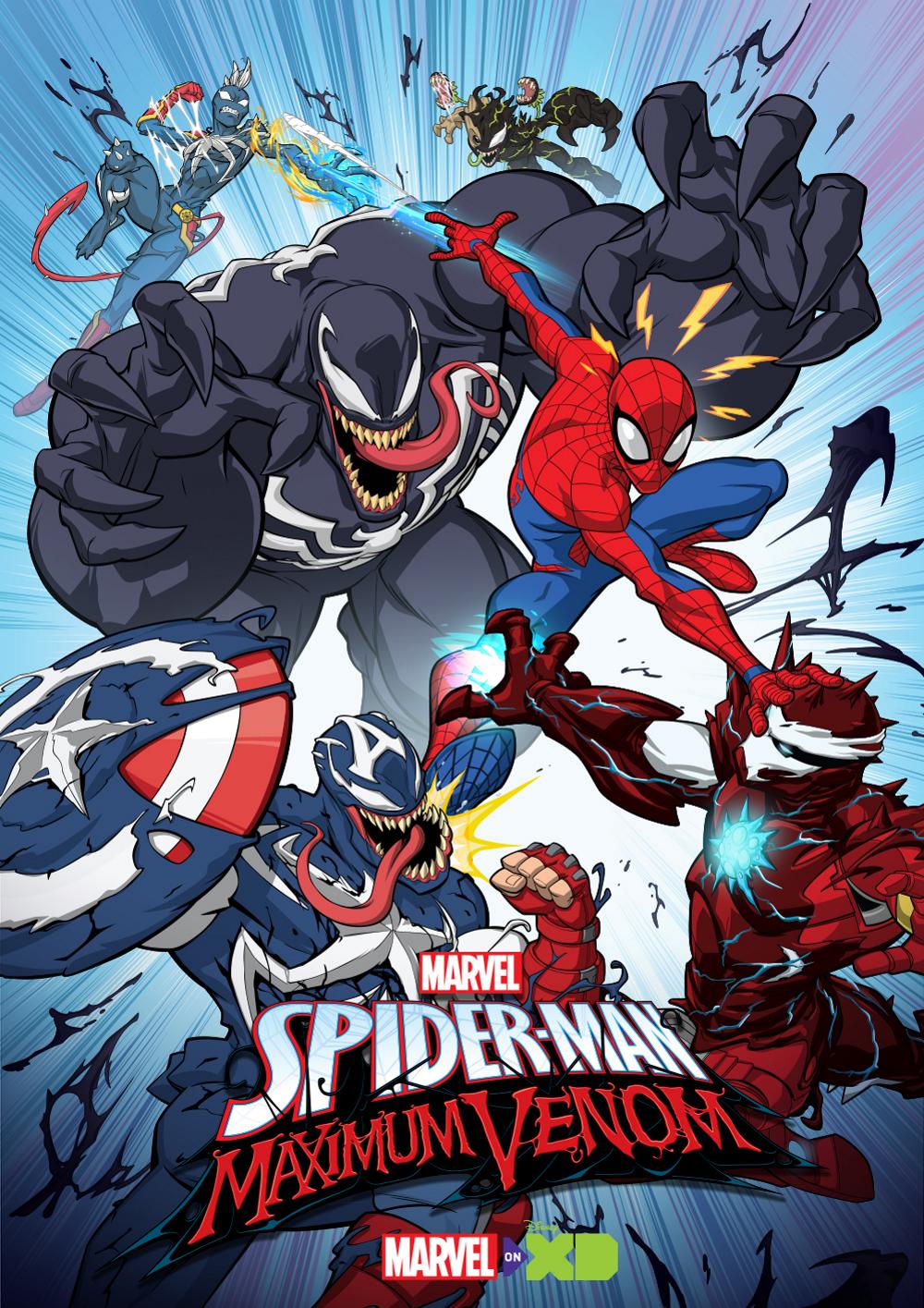


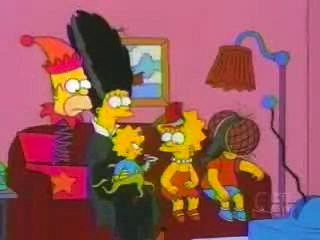


.jpg)


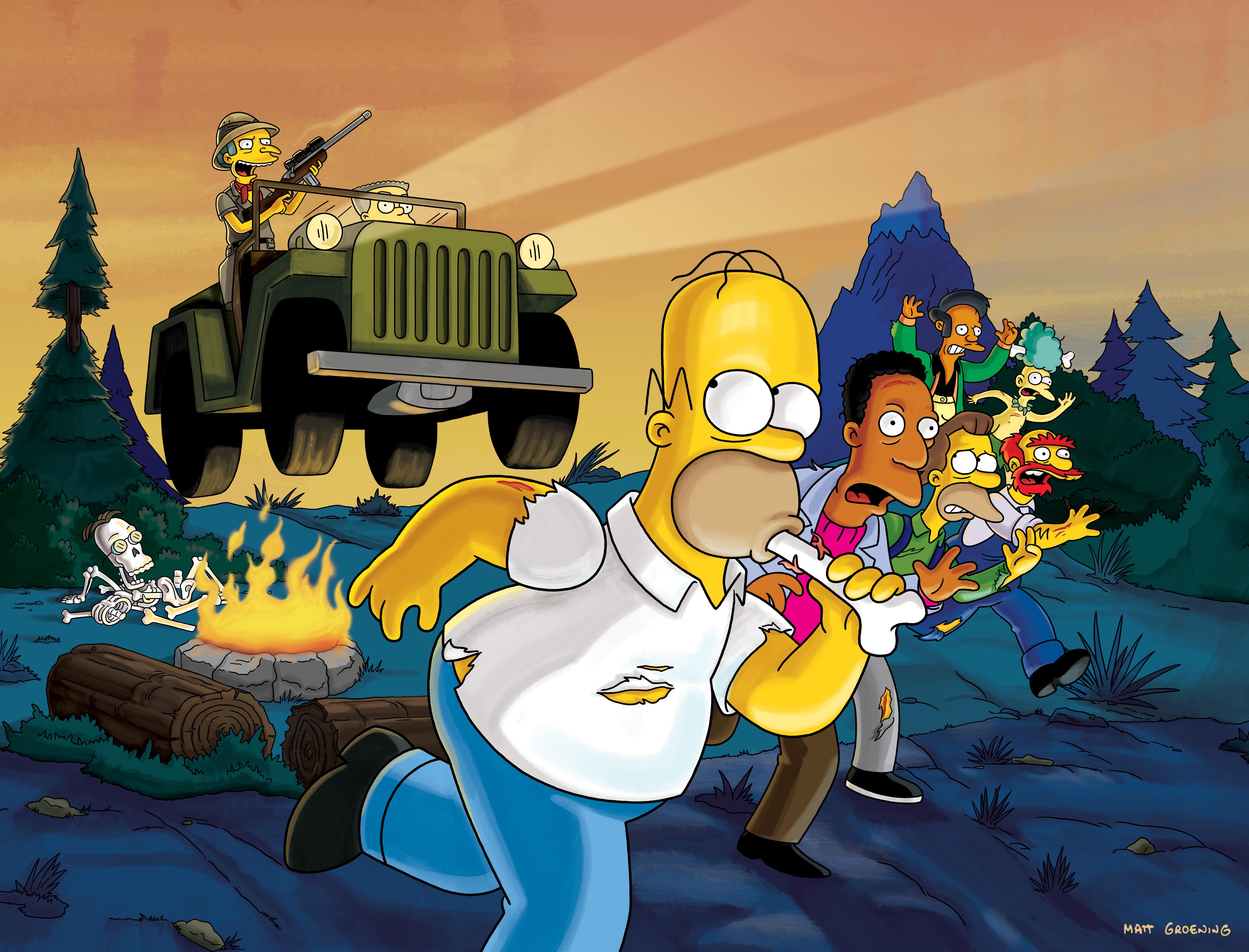
.jpg)
